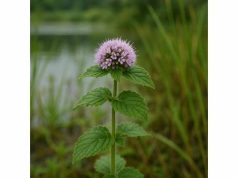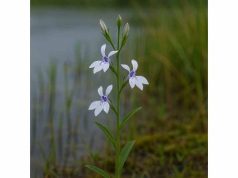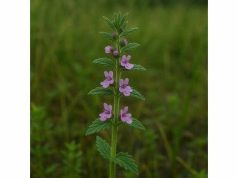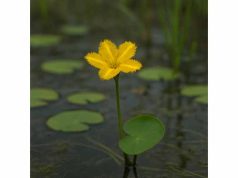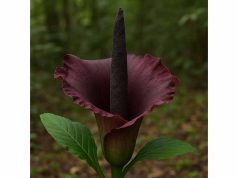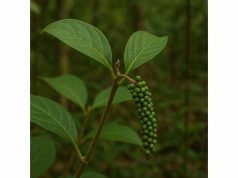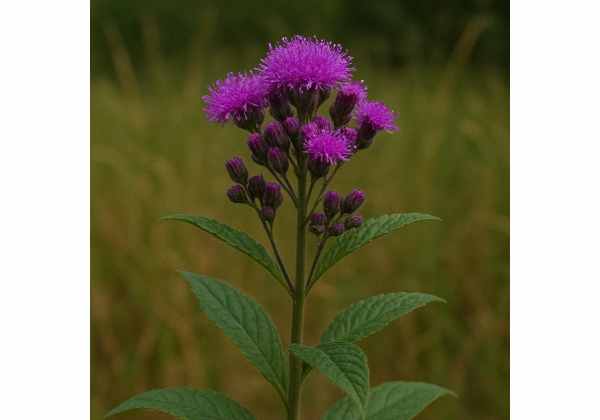
Vernonia—a diverse genus of flowering plants in the Asteraceae family—has earned its place in traditional medicine for centuries. Packed with potent phytochemicals like sesquiterpene lactones, flavonoids, and phenolic acids, various Vernonia species support anti-inflammatory, antimicrobial, and antioxidant actions. Herbal practitioners leverage leaf extracts and decoctions to soothe digestive disturbances, bolster immune defenses, and even assist in blood sugar regulation. From teas and tinctures to topical poultices, Vernonia’s versatility makes it a compelling botanical ally. In this in-depth guide, we’ll explore its botanical profile, chemical makeup, therapeutic virtues, practical applications, research highlights, and answers to your burning questions.
Table of Contents
- Physical Description and Habitat Distribution
- Phytochemical Spectrum and Core Constituents
- Health Advantages and Fundamental Qualities
- Practical Applications and Safety Considerations
- Research Findings and Key Study Outcomes
- FAQ
Physical Description and Habitat Distribution
Vernonia is a sprawling genus encompassing over 1,000 species, ranging from herbaceous perennials and shrubs to small trees. Found predominantly in tropical and subtropical regions—particularly Africa, Asia, and the Americas—these plants are identified by their vibrant purple or pink composite flower heads, which sit atop erect or branching stems. Leaves can vary dramatically between species: some bear lanceolate, serrated edges, while others display broader, more ovate foliage. In Vernonia amygdalina (bitter leaf), for instance, leaves are elongated, with deeply toothed margins and a characteristic bitter taste that gives the plant its common name.
Ecologically, many Vernonia species colonize disturbed soils, road verges, and open woodland margins. Their adaptability to poor, sandy, or rocky soils, along with moderate drought tolerance, allows them to thrive in habitats where other plants struggle. In cultivation, they prefer full sun to light shade and well-drained soil. Gardeners often note rapid growth—some species can reach heights of 2 to 3 meters in a single season—so regular pruning helps maintain a manageable form and promotes bushier branching.
Flower structure in Vernonia is fascinating: each head comprises numerous tubular florets, which cluster into dense corymbs or panicles. Pollinators, including bees, butterflies, and certain bird species, are drawn to these floral displays, making Vernonia an attractive companion for pollinator gardens. After flowering, seed heads hold tiny, wind-dispersed achenes, ensuring prolific self-seeding. This reproductive vigor has ecological benefits—stabilizing soil and providing nectar sources—but also calls for mindful management to prevent invasive spread in non-native regions.
In traditional agroforestry, Vernonia species often serve dual roles: as hedges to delineate fields and as green manure to enrich depleted soils. Farmers appreciate their fast biomass production and the ability to return organic matter to the field when cut and incorporated. Whether lining garden edges or rehabilitating degraded land, Vernonia’s robust nature underpins both its medicinal and ecological significance.
Phytochemical Spectrum and Core Constituents
Vernonia’s healing potential stems from a rich tapestry of bioactive molecules. Here’s a deep dive into the herb’s major constituents:
- Sesquiterpene Lactones (e.g., Vernolide, Vernodalin, Epivernodalol)
- These bitter compounds deliver anti-inflammatory and cytotoxic effects by modulating NF-κB pathways and inhibiting pro-inflammatory enzymes.
- Responsible for the pronounced bitterness of some species, notably V. amygdalina.
- Flavonoids (e.g., Luteolin, Apigenin, Quercetin)
- Potent antioxidants that scavenge free radicals, protecting cells from oxidative stress and lipid peroxidation.
- Exhibit vasoprotective and mild antispasmodic actions.
- Phenolic Acids (e.g., Chlorogenic Acid, Caffeic Acid, Gallic Acid)
- Offer antimicrobial benefits against bacteria and fungi.
- Support anti-inflammatory responses by downregulating COX-2 expression.
- Triterpenoids (e.g., Lupeol, β-Amyrin)
- Contribute to anti-inflammatory and hepatoprotective properties.
- Show promise in preliminary studies for modulating immune responses.
- Alkaloids (e.g., Vernine)
- Present in trace amounts; may offer mild analgesic and antispasmodic benefits.
- Require further research to fully elucidate their mechanisms.
- Saponins
- Natural surfactants that can enhance the absorption of other actives and display expectorant effects in respiratory formulas.
- Vitamins and Minerals
- Contains vitamins A and C, along with calcium, magnesium, and trace iron, supporting general nutritional status.
- Glycosides (e.g., Flavone Glycosides)
- Improve water solubility of flavonoids, aiding bioavailability.
- Contribute to mild diuretic effects.
These Active Compounds converge to give Vernonia species a potent blend of anti-inflammatory, antioxidant, antimicrobial, and immunomodulatory activities. Traditional preparations—bitter leaf decoctions, cold leaf infusions, and dried leaf powders—exploit these molecules in ways modern phytopharmacology is only beginning to validate.
Health Advantages and Fundamental Qualities
Vernonia Benefits emerge from its unique phytochemistry, offering a broad spectrum of therapeutic actions:
- Anti-Inflammatory Relief:
Sesquiterpene lactones inhibit inflammatory mediators, making Vernonia helpful for joint discomfort, muscle soreness, and inflammatory skin conditions. - Antioxidant Protection:
Flavonoids and phenolic acids neutralize free radicals, safeguarding cell membranes and DNA from oxidative damage linked to aging and chronic disease. - Immune Support:
Triterpenoids and sesquiterpenes modulate immune cell activity, enhancing the body’s natural defenses without overstimulation. - Antimicrobial Defense:
Phenolic acids and essential oils in leaf extracts inhibit pathogenic bacteria (e.g., Staphylococcus aureus) and fungi, useful for minor infections and wound care. - Digestive Bitters:
The pronounced bitterness of some Vernonia species stimulates digestive secretions—saliva, gastric juices, and bile—promoting healthy digestion and alleviating bloating. - Blood Sugar Regulation:
Preliminary studies show the potential of V. amygdalina extracts to modulate glucose uptake and insulin sensitivity, suggesting promise for supporting healthy blood sugar balance. - Liver and Kidney Support:
Triterpenoids and flavonoids exhibit hepatoprotective actions in animal models, aiding detoxification processes and protecting renal tissues under stress. - Respiratory Support:
Saponins may facilitate gentle expectoration, helping clear congestion in mild bronchitis or seasonal coughs. - Skin-Nourishing Effects:
Topical application of Vernonia-infused oil or poultices can soothe inflammation, tone tissues, and promote wound healing.
Imagine sipping a mild infusion of Vernonia amygdalina on a cool evening. The gentle bitterness awakens your digestive system, while anti-inflammatory compounds quietly ease the day’s muscular tension. That’s the kind of holistic synergy this plant delivers.
Practical Applications and Safety Considerations
Vernonia Uses span internal and topical realms, each leveraging its rich phytochemistry:
- Decoction for Digestive and Metabolic Support
- Method: Simmer 1–2 tablespoons of chopped fresh or dried leaves in 500 ml of water for 10–15 minutes.
- Dosage: Drink 100 ml, two to three times daily before meals to stimulate digestion and support healthy blood sugar levels.
- Cold Infusion for Immune and Anti-Inflammatory Support
- Method: Cover 1 tablespoon of dried leaves with 250 ml cold water, steep overnight.
- Use: Sip throughout the day to harness gentle anti-inflammatory and antioxidant actions.
- Tincture for Concentrated Extracts
- Method: Macerate fresh leaves in 50% alcohol for 4 weeks, shaking daily.
- Dosage: 20–30 drops in water, up to three times per day for acute support.
- Topical Poultice or Compress
- Method: Crush fresh leaves, apply directly to inflamed joints, minor wounds, or insect bites.
- Tip: Secure with gauze and leave for 20–30 minutes to draw out toxins and reduce swelling.
- Infused Oil for Muscle and Skin Care
- Method: Infuse leaves in a carrier oil (olive or sweet almond) over low heat for 2–3 hours; strain.
- Use: Massage onto sore muscles, arthritic joints, or use as a base for salves with beeswax.
Safety and Contraindications
- Bitter Intolerance: The strong bitterness may be off-putting; start with lower doses and dilute with other herbs if necessary.
- Pregnancy & Breastfeeding: Limited safety data—consult a qualified healthcare provider before use.
- Medication Interactions: May interact with antihypertensive drugs and hypoglycemic agents—monitor effects closely.
- Allergic Reactions: Rare but possible; perform a patch test for topical preparations.
- Toxicity: Certain Vernonia species contain higher sesquiterpene concentrations; adhere to recommended dosages to avoid gastrointestinal upset.
Always source Vernonia from reputable suppliers to ensure plant identity and purity. When wild-harvesting, confirm proper species identification to avoid toxic look-alikes.
Research Findings and Key Study Outcomes
Modern science is increasingly validating Vernonia’s traditional uses. Below are pivotal studies:
- Ijeh & Ejike (2005), Journal of Ethnopharmacology
- Focus: Anti-diabetic potential of Vernonia amygdalina leaf extracts.
- Outcome: Aqueous extracts enhanced glucose uptake in rat muscle tissues and improved insulin sensitivity.
- Omoregie et al. (2008), African Journal of Biotechnology
- Focus: Antibacterial activity of Vernonia amygdalina against multidrug-resistant strains.
- Outcome: Leaf extracts inhibited growth of E. coli, S. aureus, and Pseudomonas aeruginosa at moderate concentrations.
- Orisakwe et al. (2011), Phytomedicine
- Focus: Hepatoprotective effects in CCl₄-induced liver damage in rats.
- Outcome: Pretreatment with Vernonia extract reduced liver enzyme markers (ALT, AST) and preserved histological architecture.
- Ugochukwu et al. (2013), Journal of Medicinal Plants Research
- Focus: Anti-inflammatory and analgesic properties of Vernonia amygdalina.
- Outcome: Sesquiterpene-rich fractions inhibited paw edema in mice and reduced pain responses in hot-plate tests.
- Iwalokun et al. (2014), Journal of Herbal Pharmacotherapy
- Focus: Antioxidant capacity and phenolic profiling of multiple Vernonia species.
- Outcome: High levels of chlorogenic and gallic acids corresponded to strong DPPH scavenging activity.
- Ukwe & Okay (2017), Journal of Integrative Medicine
- Focus: Pilot clinical trial on glycemic control in prediabetic volunteers.
- Outcome: Daily consumption of Vernonia tea for 8 weeks led to a moderate reduction in fasting blood glucose.
- Ezeonu et al. (2020), Frontiers in Pharmacology
- Focus: Immunomodulatory effects of Vernonia leaf polysaccharides.
- Outcome: Enhanced macrophage activity and increased production of IL-2 and IFN-γ in vitro, indicating potential for immune support.
These studies underscore Vernonia’s multifaceted potential—from metabolic regulation and antimicrobial defense to liver protection and immune modulation. Continued clinical research may pave the way for standardized herbal formulations and novel therapeutic applications.
Frequently Asked Questions
What is the best way to prepare Vernonia tea?
Simmer 1–2 tablespoons of chopped fresh or dried Vernonia leaves in 500 ml of water for 10–15 minutes. Strain and drink 100 ml, two to three times daily to support digestion and metabolism.
Can Vernonia help manage blood sugar levels?
Yes. Studies indicate that Vernonia amygdalina extracts enhance insulin sensitivity and glucose uptake. Regular moderate consumption—per research protocols—may support healthy blood sugar balance.
Is Vernonia safe for topical use on skin irritations?
Generally, yes. Fresh leaf poultices or infused oils can soothe minor wounds and inflammation. Always perform a patch test first, and avoid broken skin to prevent irritation.
Are there any side effects of consuming Vernonia?
Excessive intake may cause gastrointestinal upset due to its strong bitterness. Start with lower doses and gradually increase. Consult a healthcare provider if you’re on diabetes or blood pressure medications.
Which Vernonia species are most commonly used medicinally?
Vernonia amygdalina (“bitter leaf”) is the most researched for metabolic and antimicrobial effects. Other species like V. auriculifera and V. cinerea also see traditional use but have less clinical data.
Can children use Vernonia in herbal preparations?
Children can use mild decoctions at half adult dosage, primarily for digestive support. Always consult a pediatrician before administering botanicals to young children.
Disclaimer: The information in this article is for educational purposes only and does not replace professional medical advice. Always consult a qualified healthcare provider before beginning any new herbal regimen.
Share this article on Facebook, X, or your preferred platform, and follow us for more herbal wisdom!

